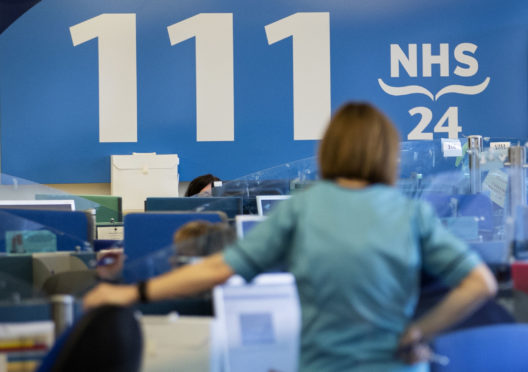
Around 10 million people will be on the waiting list for NHS treatment by the end of the year – more than double the current figure, health bosses have said.
Projections by the NHS Confederation show that the combined effects of keeping up social distancing, the backlog of treatments and challenges around staffing mean the list is expected to rise from around 4.2 million currently to around 10 million by Christmas.
This is the most realistic scenario, and assumes the health service making a steady return to full capacity within the next 12 months.
The pessimistic scenario, according to the NHS Confederation, assumes a second wave of Covid-19 and a lack of treatments or a vaccine, pushing the waiting list to around 11 million by the end of the year.
The most optimistic scenario assumes a faster return to normal, where the waiting list will be around eight million by the end of the year.
The confederation, which represents health and care leaders, published a new report warning that the health service in England “faces an uphill battle” as it continues to manage thousands of sick and recovering Covid-19 patients while also trying to restart services such as those for cancer, stroke and heart disease.
It warned that services will operate with much reduced capacity – possibly around 60% of normal – because of the need for infection control measures, including social distancing to keep patients and staff safe.
The health leaders called on the Government to prepare the public not to expect the same level of service for many months, adding that some staff are so exhausted and traumatised from caring for coronavirus patients that they will need support.
It comes after the Society for Acute Medicine (SAM) warned earlier this week that the NHS must prepare for a “winter like no other” as it copes both with seasonal flu and coronavirus.
In its study and accompanying letter to Prime Minister Boris Johnson, the NHS Confederation warns that it will not be possible to simply “switch on” NHS services immediately.
It also calls for further assurances on the effectiveness of the Test and Trace programme and further guarantees over personal protective equipment (PPE).
NHS Confederation chief executive Niall Dickson said: “NHS leaders understand the need to ease lockdown and get the country ‘back to work’.
“Part of this will involve restarting diagnostic screening, routine operations, outpatient appointments and other care, but we need to do this safely,” he said.
“That is why we need a robust plan, communicated clearly, and to make sure the NHS can prepare safely, protecting its staff, patients and the wider community as it does so.
“The NHS wants to get back to providing these vital services – the virus has inflicted pain and suffering throughout the UK, but we also know the measures to combat it have come at a terrible cost to those who have not been able to access the care, treatment and support they need and to many whose conditions have gone undiagnosed.
“There is a real determination to rise to this challenge, but it will need extra funding and capacity, not least in rehabilitation and recovery services in the community where so much of the coming demand will be felt.”
The report said that “recent short-term financial commitments”, including the coronavirus emergency response fund and the writing off of provider debt, have been welcomed, but many hospitals still say their financial position is rapidly deteriorating.
The study also calls for an extension of the current deal with the independent sector until the end of the financial year “to provide capacity to support the NHS to manage the backlog of treatment.”
In addition, the Nightingale Hospitals should also be maintained in case of any further spikes in infections, it said.
The report also called for a review of “burnout and wider wellbeing” across the NHS and social care workforce.
A Royal College Of Nursing spokesman said: “For burnt-out nursing staff on short-staffed wards, care homes or clinics, it will be a struggle to restart services.
“The legacy of this pandemic is yet to dawn – the professionals are still focused on the here and now.
“As services begin to return, the Government must continue to invest in the workforce so that an exhausted profession – already facing 40,000 vacancies at the start of this pandemic – is properly supported.”
Shadow health secretary Jonathan Ashworth said: “Ministers need to take heed of these warnings from NHS leaders now.
“It is inevitable that the Covid-19 pandemic will impact our health service in the months ahead but it is vital that ministers begin to address this backlog of delayed treatment and rising clinical need.”

Enjoy the convenience of having The Sunday Post delivered as a digital ePaper straight to your smartphone, tablet or computer.
Subscribe for only £5.49 a month and enjoy all the benefits of the printed paper as a digital replica.
Subscribe